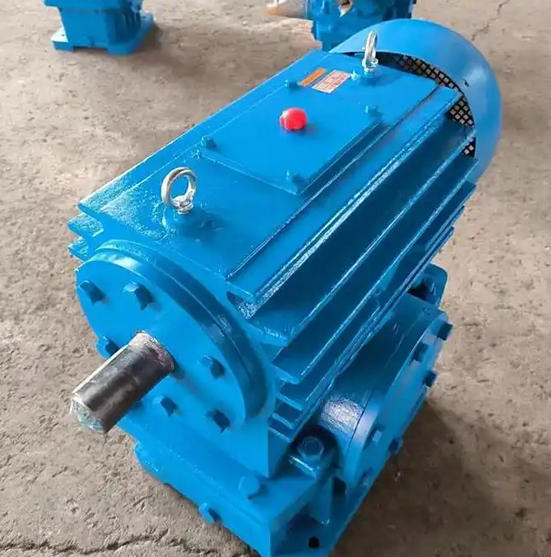What are the characteristics of abnormal noises caused by installation deviations in the WHS160-8-I worm gear reducer
The abnormal noise caused by installation deviation of WHS160-8-I worm gear reducer has the following typical characteristics, which need to be analyzed in combination with specific deviation types:
1、 Abnormal noise caused by coaxiality deviation
High frequency vibration and noise
When the coaxiality of the input/output shaft exceeds the tolerance (radial deviation>0.05mm or angular deviation>0.1 °), a high-frequency "buzzing sound" will be generated at the coupling, which will intensify with the increase of speed and accompanied by periodic vibration.

Abnormal wear of coupling
After long-term operation, the coupling bolts may loosen due to vibration, and even the elastic components (such as rubber pads) may crack, causing metal collisions.
2、 Abnormal noise caused by installation problems of the machine base
Low frequency vibration and frictional sound
Excessive levelness of the machine base (flatness deviation>0.1mm/m) can cause low-frequency vibration of the entire machine, with obvious vibration sensation at the anchor bolts, and "rustling sound" generated by friction between the casing and the base.
Loose and abnormal noise of foundation bolts
If the bolts are not tightened in diagonal order or the torque is uneven, the deceleration machine will produce a "clunking" impact sound, and manual shaking after stopping the machine will show displacement.
3、 Abnormal meshing of worm gear and worm gear
Reverse abnormal noise is more significant
Insufficient installation accuracy may result in uneven meshing clearance between the worm gear and worm. There may be no obvious abnormal noise during forward rotation, but poor contact at the worn parts may cause impact noise due to changes in the direction of force during reverse rotation.
Periodic meshing noise
When the worm spiral is worn or the worm gear tooth surface is damaged, a regular "click" sound will be produced, especially during sudden load changes.
4、 The joint influence of bearings and transmission components
High frequency noise in the bearing area
Installation deviation may cause abnormal bearing clearance (such as axial clearance less than 0.03mm), resulting in sharp "hissing sound" and accompanied by rapid bearing temperature rise (>95 ℃).
Output shaft vibration transmission
If the load end (such as the roller conveyor of metallurgical equipment) is not aligned with the output shaft of the reducer, it will cause the whole machine to vibrate and amplify the abnormality through the transmission chain.
Troubleshooting suggestions
Prioritize checking installation accuracy: Use a dial gauge to measure the coupling runout (normal ≤ 0.03mm), and calibrate the machine base plane with a level.
Worm gear clearance detection: Measure the tooth side clearance (recommended 0.2~0.3mm) with a feeler gauge or dial gauge. The split type housing can be adjusted by adding or removing the worm end cover gasket.

